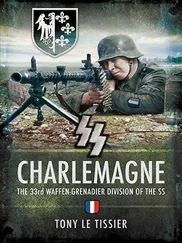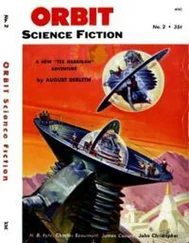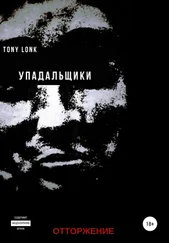The Poles, too, were fore-doomed to the Soviet sphere after World War Two. This was because of their location, on the route from Berlin to Moscow; their history, as longstanding impediments to Russian imperial ambitions in the west; and because in Poland, too, the prospects of a Soviet-friendly government emerging spontaneously by popular choice were minimal. The difference between Poland and the Balkan states, however, was that Poland had been a victim of Hitler, not his ally; hundreds of thousands of Polish soldiers had fought with the Allied armies on Eastern and Western fronts; and the Poles nursed expectations about their postwar prospects.
As it transpired, those prospects were not so very bad. The Polish Communists in the so-called ‘Lublin Committee’—set up in July 1944 by the Soviet authorities so that they would have a ready-made government to put in office when they reached Warsaw—could hardly claim a mass base, but they had a degree of local support, especially among the young, and they could point to some real benefits of Soviet ‘friendship’: an effective guarantee against German territorial revanchism (a genuine consideration at the time) and a policy of national exchanges whereby Poland was ‘cleansed’ of its remaining Ukrainian minority and ethnic Poles from the east were resettled within the new national frontiers. These considerations allowed Polish Communists, for all their marginality (many of them, too, were of Jewish origin), to claim a place in Polish national and even nationalist political traditions.
Nevertheless, Poland’s Communists too would always have been an insignificant minority in electoral terms. The Polish Peasant Party of Stanislaw Mikołajczyk counted some 600,000 members in December 1945, ten times the number of activists in the Communists’ Polish Workers’ Party (the Polish United Workers’ Party after its absorption of the Socialists in December 1948). But Mikołajczyk, prime minister of the wartime government-in-exile, was fatally handicapped by his party’s characteristically Polish insistence on being both anti-Nazi and anti-Soviet.
Stalin was more or less indifferent to the success of ‘Socialism’ in Poland, as later events would reveal. But he was far from indifferent to the general tenor of Polish policy, especially Polish foreign policy. Indeed, together with the outcome of the German standoff, it was more important to him than anything else, at least in Europe. Accordingly the Peasant Party was steadily edged aside, its supporters threatened, its leaders attacked, its credibility impugned. In the blatantly rigged Polish parliamentary elections of January 1947, the Communist-led ‘Democratic bloc’ obtained 80 percent of the votes, the Peasant Party just 10 percent. [34] This was not the first time armed Russians had personally supervised crucial Polish elections: during the local parliamentary elections of 1772 at which Poles were asked to chose representatives who would confirm the partition of their country, foreign troops stood menacingly by to ensure the desired outcome.
Nine months later, in fear of his life, Mikołajczyk fled the country. Remnants of the wartime Home Army continued to fight a guerilla war with the Communist authorities for a few more years, but theirs, too, was a hopeless cause.
In Poland, the Soviet Union had so obvious an interest in the political complexion of the country that the Poles’ wartime illusions—before and after Yalta—can seem quixotic. In Hungary, however, notions of a ‘Hungarian road to Socialism’ were not altogether fanciful. Hungary’s chief post-war interest for Moscow was as a safe conduit for Red Army troops, should these need to move west into Austria (or—later—south into Yugoslavia). Had there been widespread public support for the local Communists their Soviet advisers might have been willing to play out the ‘democratic’ tactic longer than they did.
But in Hungary, too, the Communists proved consistently unpopular, even in Budapest. Despite being targeted as reactionary and even Fascist, the Smallholders Party (Hungary’s equivalent of Agrarian parties elsewhere) secured an absolute majority in the national elections of November 1945. With the backing of the Socialists (whose leader Anna Kéthly refused to believe that the Communists would stoop to election-rigging), the Communists succeeded in expelling some of the Smallholder deputies from parliament and charged them in February 1947 with conspiracy and, in the case of their leader Béla Kovács, espionage against the Red Army (Kovács was sent to Siberia, whence he returned in 1956). In new elections in August 1947, shamelessly falsified by the Communist Interior Minister László Rajk, the Communists still managed to secure only 22 percent of the vote, although the Smallholders were duly reduced to a 15 percent share. In these circumstances Hungary’s road to Socialism converged rapidly with that of its eastern neighbours. By the next elections, in May 1949, the ‘People’s Front’ was credited with 95.6 percent of the vote.
It is easy, in retrospect, to see that hopes for a democratic Eastern Europe after 1945 were always forlorn. Central and Eastern Europe had few indigenous democratic or liberal traditions. The inter-war regimes in this part of Europe had been corrupt, authoritarian and in some cases murderous. The old ruling castes were frequently venal. The real governing class in inter-war Eastern Europe was the bureaucracy, recruited from the same social groups who would furnish the administrative cadre of the Communist states. For all the rhetoric of ‘Socialism’, the transition from authoritarian backwardness to Communist ‘popular democracy’ was a short move and an easy one. It is not so very surprising that history took the turn it did.
Moreover the alternative of a return to the politicians and policies of pre-1939 Romania or Poland or Hungary significantly weakened the anti-Communist case, at least until the full force of Soviet terror was felt after 1949. After all, as the French Communist leader Jacques Duclos slyly asked in the Communist daily l’Humanité on July 1st 1948, was not the Soviet Union these countries’ best guarantee not just against a return to the bad old days but of their very national independence? That was indeed the way it seemed to many at the time. As Churchill observed: ‘One day the Germans would want their territory back and the Poles would not be able to stop them.’ The Soviet Union was now the self-appointed protector of the new borders of Romania and Poland, not to speak of the redistributed land of expelled Germans and others all across the region.
This was a reminder, as though it were needed, of the omnipresence of the Red Army. The 37th Army of the 3rd Ukrainian Front was detached from the forces occupying Romania in September 1944 and stationed in Bulgaria, where it remained until the Peace Treaties were signed in 1947. Soviet forces remained in Hungary until the mid-Fifties (and again after 1956), in Romania until 1958. The German Democratic Republic was under Soviet military occupation throughout its forty-year life and Soviet troops transited regularly across Poland. The Soviet Union was not about to leave this part of Europe, whose future was thus intimately bound up with the fate of its giant neighbour, as events were to show.
The apparent exception was of course Czechoslovakia. Many Czechs welcomed the Russians as liberators. Thanks to Munich they had few illusions about the Western powers and Edvard Beneš’s London-based government-in-exile was the only one that made unambivalent overtures to Moscow well before 1945. As Beneš himself expressed his position to Molotov in December 1943, ‘in regard to issues of major importance, [we]… would always speak and act in a fashion agreeable to the representatives of the Soviet government.’ Beneš may not have been as alert as his mentor, the late President Tomáš Masaryk, to the risks of a Russian or Soviet embrace, but he was not a fool either. Prague was going to be friendly with Moscow for the same reason it had sought close links to Paris before 1938: because Czechoslovakia was a small, vulnerable country in central Europe and needed a protector.
Читать дальше












